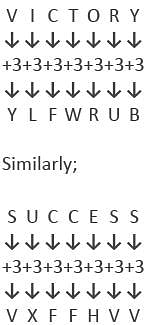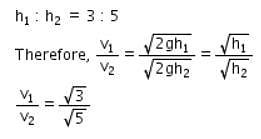KVS TGT Science Mock Test - 10 - KVS PGT/TGT/PRT MCQ
30 Questions MCQ Test KVS TGT Exam Mock Test Series 2024 - KVS TGT Science Mock Test - 10
| 1 Crore+ students have signed up on EduRev. Have you? Download the App |
What are the seven key priorities listed in the Union Budget 2023-24 as the "Saptarishi" guiding the government through the "Amrit Kaal"?
How many sessions of the Constituent Assembly were held between December 9, 1946, and August 14, 1947?
If VICTORY is coded as YLFWRUB, then how can SUCCESS be coded?
Which teaching level gives the student the chance to distinguish in depth between conceptual examples that are positive and those that are negative?
The characteristics of a reflective thinking learner are
1. Always ask ‘why?'
2. Predominantly subject centered.
3. Relate new information to past experiences.
4. Students only cram the facts.
5. Examine their feelings about what they are learning.
Select the correct options:
Which one of the following is NOT a guiding principle for curriculum development proposed by NCF?
For education in school to be effective, the environment needs to be conducive to learning. This stimulating learning environment can be created in which of the following ways?
I. Effective classroom organisation
II. Interactive and whole school displays
III. Climate of innovation
Which of the following statement is correct?
I. When parents and the community are involved in the development of the curriculum, the same curriculum becomes easy and interesting.
II. Community and parent involvement help in creating curriculum and learning materials that reflect the daily lives of children in society.
If the upward direction is taken as positive, what is the sign of velocity and acceleration when a body falls freely from a height?
The ratio of the heights from which two bodies are dropped is 3:5 respectively. The ratio of their final velocities is:
When a body floats in a liquid, its apparent weight is always
If yellow seeded wrinkled pea plant (YYrr) is crossed with green seeded round pea plant (yyRR), the seeds produced in F1 generation are
The process of crossing genetically dissimilar plants of a species, is called
A bat hears the echo of its squeak after 0.1 second. How far is the obstacle from the bat? Speed of sound is 344 m/s.
In our country, there are attempts to increase the height of several existing dams like Tehri and Almati dams across Narmada. Choose the correct statements among the following that are a consequence of raising the height of dams.
(i) Terrestrial flora and fauna of the area is destroyed completely.
(ii) Dislocation of people and domestic animals living in the area.
(iii) Valuable agricultural land may be permanently lost.
(iv) It will generate permanent employment for people.
The most appropriate definition of a natural resource is that it is a substance commodity that is
Chlorenchyma and aerenchyma are modified/ specialised




















